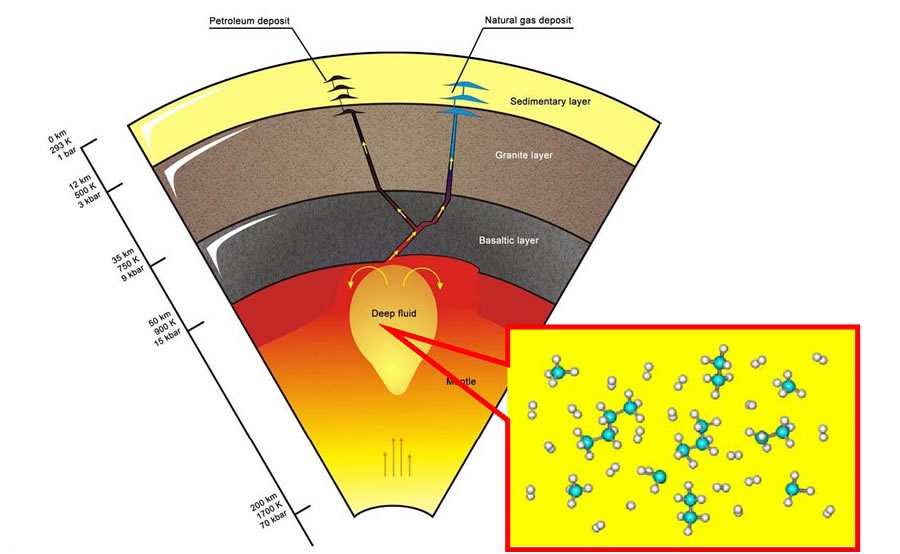The stock explanation for the origins of crude oil and natural gas is that these hydrocarbons are the end product of millions of years of geochemical processing of long-dead sea creatures. But, these materials might also be found much deeper in the Earth’s mantle and may have a non-organic origin hinting at a controversial mechanism for a partial replenishment of reserves.
The oil we convert into petrol and feedstocks for the chemical industry, and the natural gas (methane, CH4) that heats our homes started out as living organisms that died, were compressed, and heated under heavy layers of sediment in the Earth’s crust over the course of millions of years. But, the idea that some of these hydrocarbons may have been formed from material that was never alive has been a point of contention for many years.
Anton Kolesnikov and Alexander Goncharov of the Geophysical Laboratory, Carnegie Institution of Washington, in Washington DC and Vladimir Kutcherov of the Lomonosov Moscow State Academy of Fine Chemical Technology, Russia and the Royal Institute of Technology, in Stockholm, Sweden, have studied the possibility of an abiotic origin for hydrocarbons.
“The notion that hydrocarbons generated in the mantle migrate into the Earth’s crust and contribute to oil-and-gas reservoirs was promoted in Russia and Ukraine many years ago,” explains Kutcherov. He and his colleagues have now looked at the laboratory synthesis and stability of hydrocarbons that can form under a range of conditions found in the Earth’s mantle.
They have now demonstrated for the first time that ethane (C2H6) and heavier saturated hydrocarbons, propane, butane, can be formed under the pressure and temperature conditions of the upper mantle, just below the crust. “Our results support the suggestion that hydrocarbons heavier than methane can be produced by abiogenic processes in the upper mantle,” the researchers say.

The team used a so-called diamond anvil cell and a laser heat source to apply a pressure exceeding 20,000 times atmospheric pressure to methane at temperatures from 700 to 1200 Celsius. Under the same conditions ethane was converted to methane. The transformations suggest even heavier hydrocarbons might exist deeper inside the earth. The fact that the processes seem to be reversible implies that saturated hydrocarbons can form from carbon and hydrogen present in the mantle without requiring once-living matter.
If such hydrocarbons formed in the mantle replenish the oil and gas supplies we extract from the crust, then the compounds, which are essentially “reduced” carbon, must survive the migration from the mantle into the crust. How that might happen is not yet clear as the heat and pressure and geochemistry would normally lead to the reversal of reduction, oxidation, to carbon dioxide. As such, Kutcherov believes it is time for a new experimental and theoretical program to study the fate of carbon in the deep Earth and to determine whether migration is possible.
Further reading